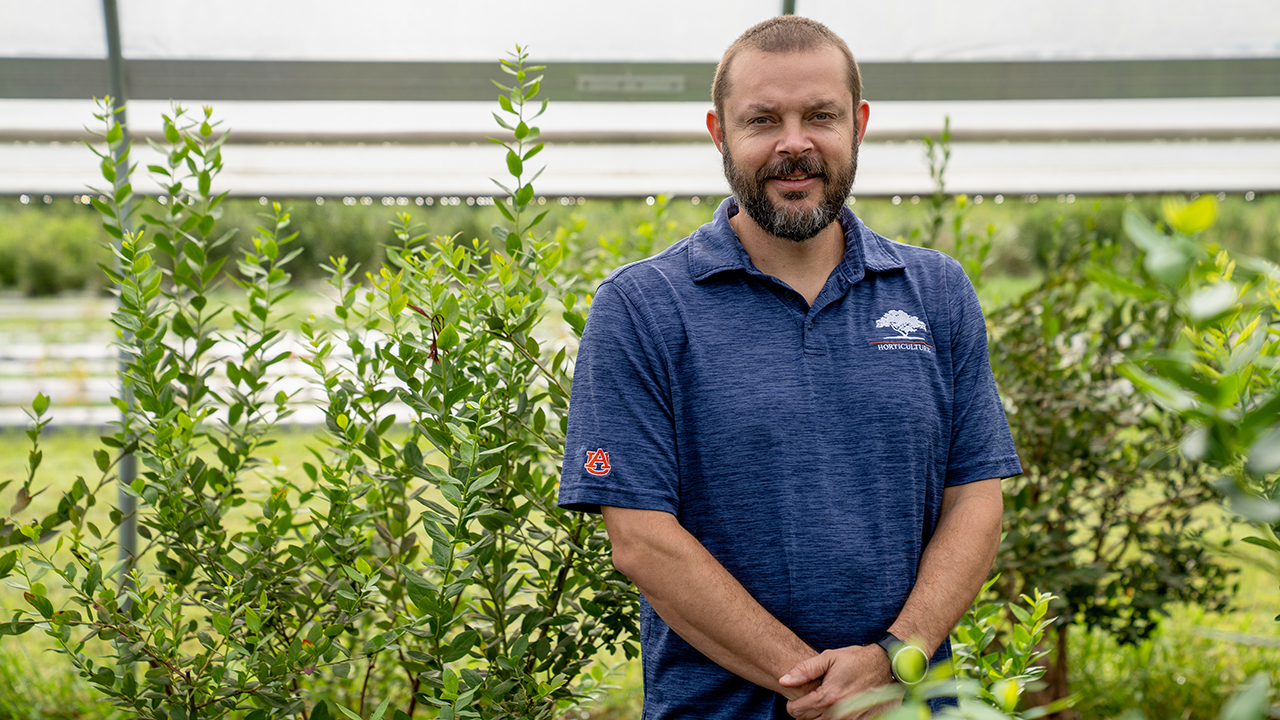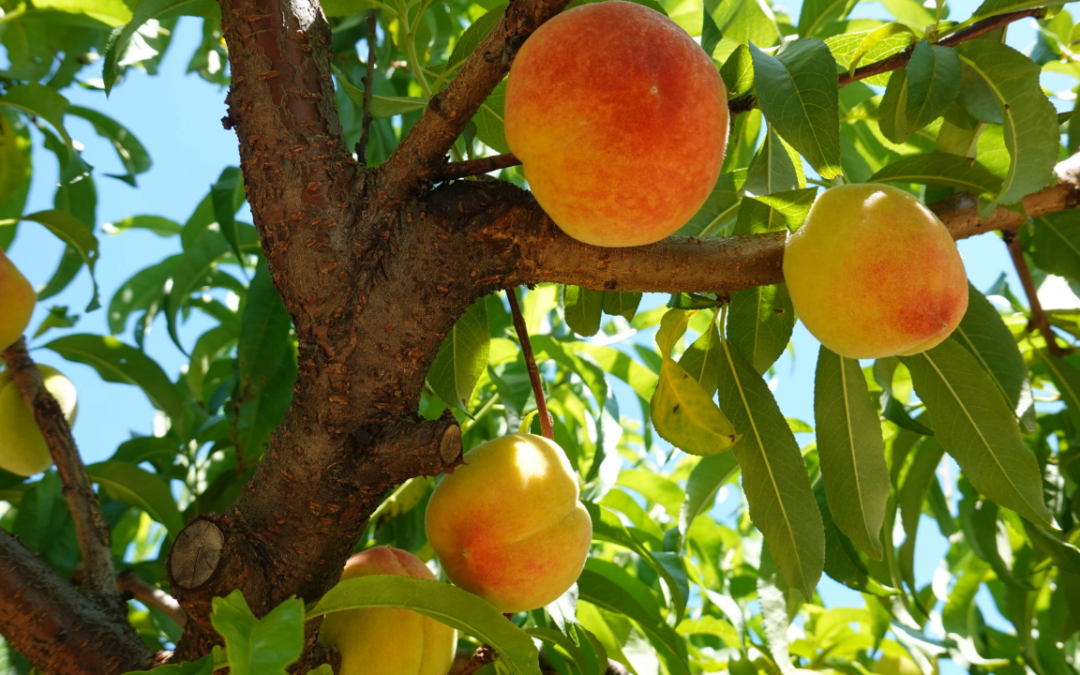The term “superfood” is used loosely these days, most often for marketing purposes to help influence food trends and sell products that claim to have health benefits. But there are still foods truly deserving of the title, and the blueberry is one of these.
Blueberries have rightfully earned the title of superfood due to their high content of a group of compounds known as polyphenols, said Carol Connell, interim extension specialist in human nutrition, diet and health for the Department to Nutritional Sciences in the Auburn University College of Human Sciences.
“Research over the last 20 years has shown that blueberries have positive health benefits that are likely due to metabolites of anthocyanins that are bioactive,” Connell said. “Anthocyanins are pigments that give the ripened fruit its red/blue/purple hues. These compounds have been shown to have high antioxidant capacity in lab studies. This is an ongoing area of research to try to determine what is responsible for the effects we see on health outcomes and risk factors.”
But blueberries contain more than just anthocyanins, she said. They also provide potassium, vitamin A, vitamin C, vitamin E and many other vitamins and minerals.
“Positive benefits have been observed in the areas of cardiovascular disease, pre-diabetes and type 2 diabetes, cognition and neurodegenerative disease, vision and obesity/weight maintenance,” Connell said. “Examples of these benefits are lower mortality from heart attack, decreased risk of hypertension, lowered LDL cholesterol and increased HDL cholesterol as well as improved endothelial function (the lining of the arteries) and less arterial stiffness.”
As the U.S. celebrates National Blueberry Month in July, researchers in the Auburn College of Agriculture and the Alabama Agricultural Experiment Station are looking for ways to boost blueberry production in the state by introducing more profitable cultivars for both field and protected cultivation.
According to the latest U.S. Census of Agriculture, blueberry production continues to increase in Alabama, from an estimated 834 acres in 2017 to approximately 1,000 acres in 2022.
“Blueberries are being grown throughout the state, but it appears there are higher concentrations of commercial production in south Alabama,” said Jay Spiers, associate professor in the Department of Horticulture and a researcher with the Experiment Station.
Rabbiteye blueberry plants are most recommended for Alabama production due to their resiliency and reduced risk of spring frost injury compared to southern highbush blueberry (SHB) plants, Spiers said.
“But there are many new southern highbush cultivars with nice fruit quality attributes such as crispy texture and large berry size,” he said. “Another big advantage, but also a risk, is that SHB typically ripen much earlier than other blueberry species. Earlier ripening opens new markets, including the Farm-to-School program, with better pricing opportunities for growers.”
Rabbiteye blueberries are native to the Southeast and can tolerate a wider range of soil types and are more resilient to disease issues than SHB and northern highbush (NHB), Spiers said. Rabbiteye blueberries also have moderate chilling requirements — usually between 350 to 700 hours below 45 F — that can be fulfilled in most if not all areas of Alabama.
“A big difference between SHB and rabbiteye is that SHB typically have a lower chilling requirement and bloom earlier than rabbiteye, making SHB more susceptible to spring frost issues,” Spiers said. “SHB and NHB have strict soil requirements, needing a higher percent organic matter and soil pH requirement of 4.5 to 5.2. Rabbiteye, however, can tolerate a lower percentage of organic matter, a wider range soil pH, and are more drought tolerant.”
Spiers’s current research project — being conducted at the Experiment Station E.V. Smith Research Center’s Plant Breeding Unit in Tallassee — seeks to determine the suitability of 15 different cultivars (13 SHB and two rabbiteye) for this region when planted inside a high tunnel and when planted in an open field.
A high tunnel is a structure covered in polyethylene plastic that is passively heated and cooled. A big advantage of high tunnel is protection from rain that can alleviate berry splitting and disease issues, Spiers said.
“Another advantage is that frost protection is enhanced when used in combination with other protective measures such as irrigation and propane heaters,” he said. “Disadvantages include the costs of these structures and limitations associated with cultivation practices under such a structure.”
Many other blueberry cultivars are being tested in Alabama trials, Spiers said. Elina Coneva, Dozier Endowed Professor and extension specialist with the Department of Horticulture, has a rabbiteye cultivar trial at the Chilton Research and Extension Center and Sushan Ru, assistant professor and blueberry breeder, is testing germplasm she has developed as well as germplasm from other breeding programs in multiple locations in Alabama.
During the most recent blueberry harvest, Spiers said blooming and harvest were expedited under high tunnel production.
“Yields were good for both high tunnel and field this year because we did not get a significant spring frost,” he said. “Fruit quality appeared better under high tunnel, and there were fewer issues with spotted winged drosophila and less berry splitting.”
“We think yields were higher under high tunnel, but we haven’t finished analyzing the data yet. In general, the earlier cultivars in this trial would not be productive in open field most years because of spring frost issues, whereas they can be productive under the high tunnel with the addition of propane heaters during spring frost events.”
By the summer of 2025, Spiers expects to have two years of significant fruit production, enabling him to give recommendations on early ripening blueberry cultivar selections for central Alabama producers.





